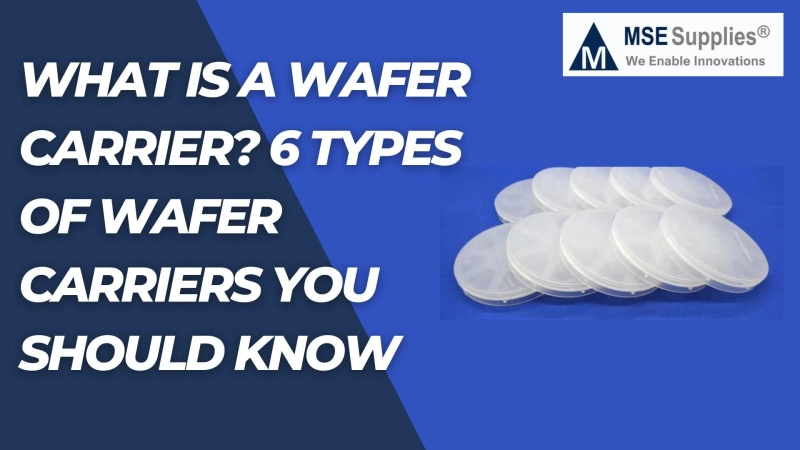A wafer is a piece of silicon or other semiconductor designed in the form of a disc. Engineers use these to complete the build of an integrated circle.
Various other thin wafers handling systems require unique handling tools such as Wafer Carrier, which is already established in the market. There are different requirements for carrier wafers depending on requirement bonding and de-bonding techniques.
Types of Wafers
Silicon WaferSilicon Wafers are a material used for producing semiconductors that improve the lives of people. Silicon is the second most commonly used material as it is used in both the technical and electronic sectors.
Silicon Wafer is a super flat disc with a mirror-like surface which makes it the flattest object in the world. It is extremely thin and free of any impurities making it the most perfect substrate material. Silicon Wafer is used for the production of both chips and microchips in electronic gadgets.
Glass WaferGlass wafers thin discs of precision glass, usually made of borosilicate glass quartz or fused silica, and are used as a substrate carrier for bonding silicon and other substrates. These are used for a variety of scientific and industrial applications. The rising demand for wafers across several industries boosted the growth of Glass Wafers that are utilized in display engineering and display glass inspection system.
Sapphire WaferSapphire is a unique combination of physical, chemical, and optical properties which makes it resistant to high temperatures, thermal shock, and water erosion making it a very good choice to be a wafer. They are widely used in GaN and thin-film epitaxial growth, silicon on sapphire, the LED market, and the optics industry. It is made by cutting the crystal bar and then grinding and polishing.
SOS WaferSilicon on Sapphire wafer ranges from 3 to 200mm and comes in small lot sizes making it ideal for research and development applications. SOS Wafers are used for the fabrication of high-frequency devices such as RFICs, RF Amplifiers, and RF Switches. High-quality SOS Wafers are shipped worldwide for industrial research. SOS gives an outstanding performance in high-temperature environments.
SOI WaferSilicon on Wafer is manufactured by bonding two silicon wafers together with an insulating oxide layer between them. This middle layer is an excellent insulating layer. The bottom layer is the supporting layer and can be utilized in sealing the structure as part of the sensing element or the devices. SOI Wafers provides additional design freedom, maximum device performance, cost-effectiveness, and ease of manufacturing.
Coated WaferThese wafers are the most widely used and have a coating of oxide and nitride. These wafers are used for the exfoliation of 2D materials where the flatness of the object is highly important. The wafers are typically loaded in hot furnaces where they are slowly heated using oxidation temperature. It is then held at the desired temperature where it grows the ideal thickness. This method makes sure that both sides are oxidized.
Wafer manufacturing is a very less known process but it plays a very important role in our daily lives. Wafers have allowed most devices to get smaller and more efficient and without this, we might still be walking with three-pound mobile phones. But what is most important is the material being used to make the Carrier Wafer or any other product such as a Ball Mill for sale for that matter.
Wafers are a real game changer because they allow electrical current to travel between circuits without interference. All these wafers are used for various purposes such as doping, slicing, cleaning, and testing.
0


